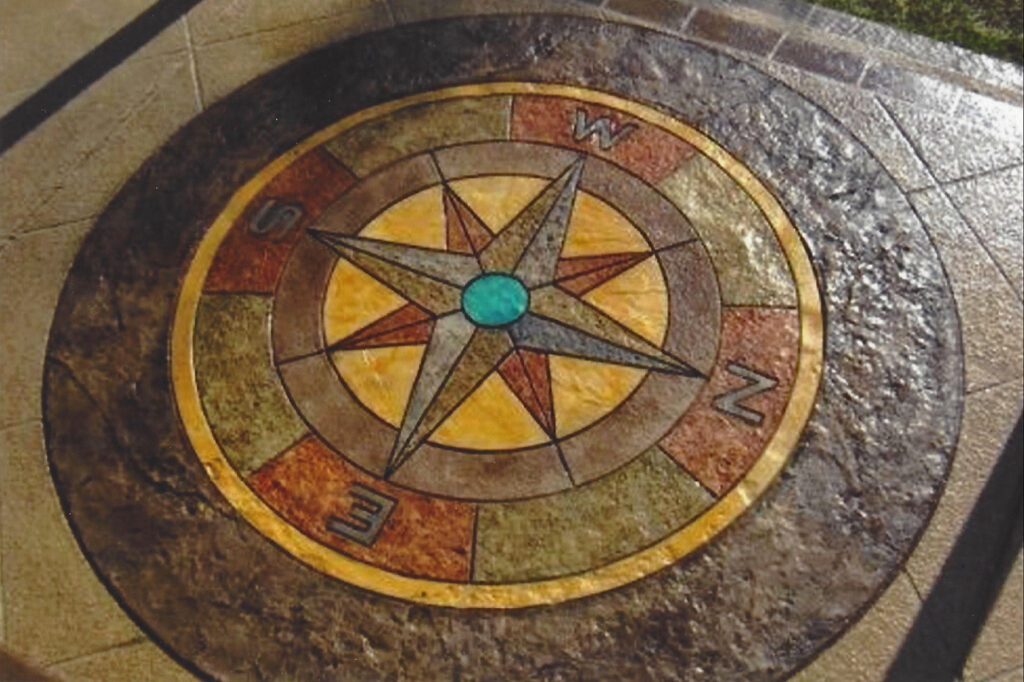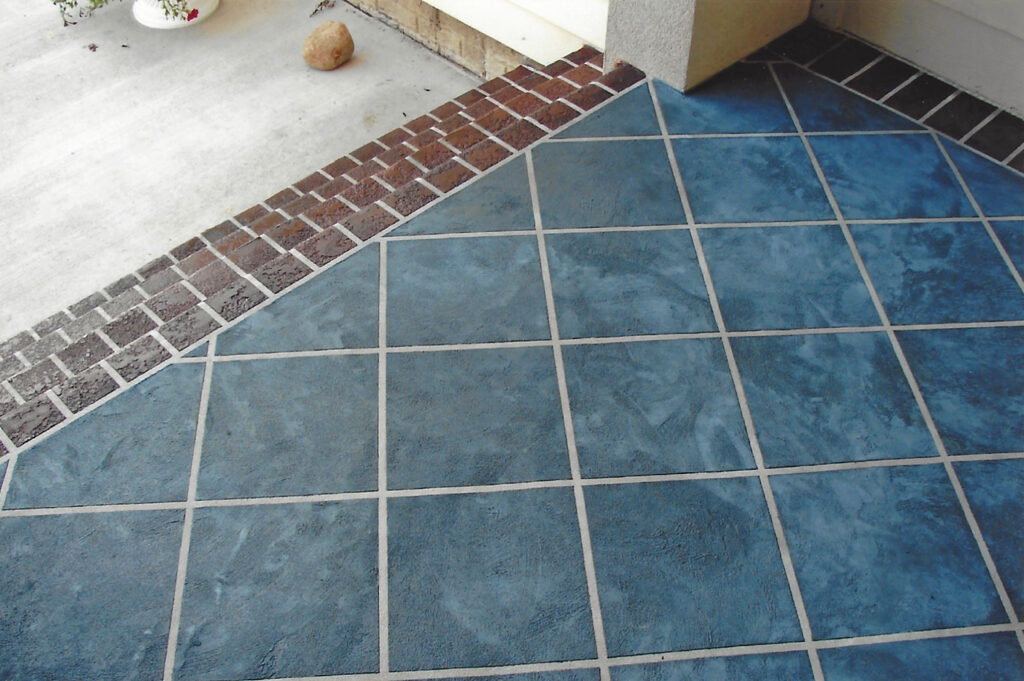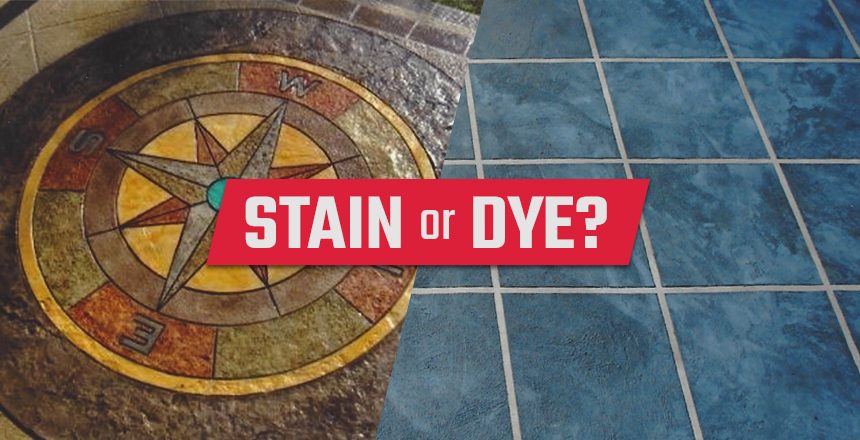Spice Up Your Concrete
Are you in the middle of concrete construction, worried about how it will turn out? Or are you looking at your old, drab concrete surface, wondering what you can do to spice it up? Well, you’re in luck.
Your concrete does not need to be dull and grey. Whether it’s a patio, kitchen floor, or driveway, you have a lot of options to bring your concrete to life! Concrete stain and concrete dye are both common methods for adding a little excitement to your concrete.
How do you choose between the two? Let’s talk about some of the pros and cons of concrete stain and dye and the reasons why you might choose one over the other.
Concrete Stain
Using concrete stains to create decorative concrete flooring is very popular with designers and builders. You can transform a previously drab surface into a unique statement piece. It’s usually a fairly cost-effective method and can completely transform a space.
Determining how a stain will react with your particular surface can be a little tricky, however. Consulting a professional can help you predict what your end result will be.

How Does Concrete Stain Work?
Concrete stain reacts differently to every concrete surface. Even when treated with the same type and color, no two surfaces will look the same—the end result changes based on the color and condition of the concrete.
Rather than coating the surface like paint, a concrete stain penetrates into the surface, infusing a rich, translucent tone. The surface usually develops a natural mottled or textured look. This particular look is one of the most important factors in deciding between concrete stain and concrete dye, since dyes provide a completely different look.
Acid-Based or Water-Based Stain?
Acid-based stains are made of inorganic material that reacts with the makeup of the concrete. It sinks into the surface and produces a chemical reaction that changes the color.
The result is more translucent and does not end up thick or opaque. This creates a really natural, organic-looking finish. The color palette is limited to earth tones like browns, tans, greens, etc.
Water-based stains do not have a chemical reaction with the concrete. They fill the pores of the concrete, producing a colored film. The resulting color is more consistent in a water-based stain and can range from translucent to opaque.
They can also create more artificial colors like yellows, purples, etc. Water-based stains are also a little safer to work with because they do not contain solvents or acids.
What To Expect From A Concrete Stain
Compared to dyes, stains tend to last longer and hold up better. They have a less saturated color than a dye but are more durable and show less wear. For this reason, stained concrete is favored for outdoor surfaces that are exposed to foot traffic, weather, and sunlight.
Concrete Dye
Concrete dyes do not react with the concrete surface the way stains do. A stain will change depending on the state of the concrete, but dyes allow you to have a little more control and a lot more options.
However, because dyes work so quickly, their application can be tricky. If not distributed correctly, it can create undesirable textures and colors.

How Does Concrete Dye Work?
Comparing concrete stain and concrete dye, concrete dyes have a much smaller particle size than stains. These particles pack together to fill the pores of the surface and are very difficult to remove, making them almost as permanent as stains. There is also virtually no residue and very little cleanup.
Water-based or Solvent-Based Dye?
Water-based dye tends to create a swirled or marbled texture similar to a stain. Solvent-based dye will generally result in a much more uniform color. Some techniques include combining water-based and solvent-based dyes in order to produce special color effects. Choosing between the two really just depends on what texture and opacity you want.
What To Expect From A Concrete Dye
Dyes penetrate much more quickly than stains. This greatly speeds the application process, but it also minimizes the margin for error. For this reason, it is generally recommended that dyes be applied by a professional to avoid undesirable results.
Dyed concrete is best for indoor surfaces. They do not withstand UV rays and will fade in the sun, so take that into consideration when deciding between concrete stain and concrete dye for your surface.
So, How Do You Pick?
There are a lot of things to take into consideration when choosing between concrete stain and concrete dye. You need to think about whether the surface is indoor or outdoor. Do you want a solid color or a marbled texture? Are you trying to achieve an artificial color or a more natural look? So much can change based on type, color, and application technique.
It’s a lot to think about, so if you have any questions or concerns, don’t hesitate to reach out to us at Brooks Construction. We’re happy to take a look at your setup and make recommendations on what would work best for you. Contact us today for more information!



